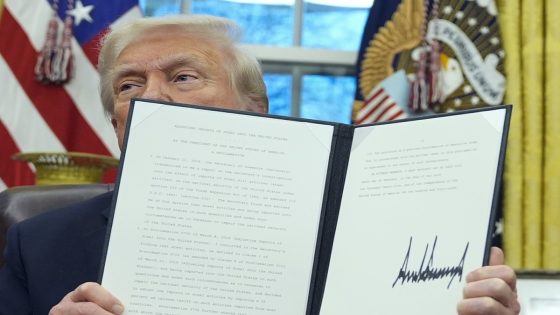On February 10, 2025, President Donald Trump announced a significant change in U.S. trade policy, imposing a 25% tariff on all steel and aluminum imports. This bold move aims to protect American industries but raises concerns about potential trade wars and economic repercussions. How will this impact the U.S. economy and consumers?
- Trump imposes 25% tariffs on steel and aluminum.
- Brazil, Canada, and Mexico affected by tariffs.
- Tariffs aim to protect U.S. industries.
- Critics warn of increased consumer costs.
- Global economic stability questioned by experts.
- Security national claims used to justify tariffs.
Trump’s Tariff Announcement: What It Means for the U.S. Economy
What does this tariff mean for American consumers and businesses? The new steel and aluminum tariffs are set to take effect on March 4, 2025. While the administration claims this will strengthen domestic production, many analysts warn it may lead to increased costs for manufacturers and consumers alike.
Understanding the Impact of Tariffs on U.S. Industries
The tariffs are a response to rising imports that officials claim threaten American jobs. However, the long-term effects may not be as beneficial as intended. Here are some key points to consider:
- Increased costs for manufacturers reliant on imported metals.
- Potential retaliatory tariffs from affected countries, impacting U.S. exports.
- Higher prices for consumers on products that use steel and aluminum.
- Possible job losses in industries that depend on affordable metal imports.
Economic Repercussions of Increased Tariffs on Imports
The introduction of these tariffs could lead to inflationary pressures in the U.S. economy. As manufacturers pass on their increased costs, consumers might face higher prices for a range of products, from cars to appliances. This situation raises the question: will the benefits of protecting domestic industries outweigh the costs to consumers?
Global Reactions to U.S. Tariff Policies
Countries around the world are closely monitoring the U.S. tariff situation. Many leaders have expressed concerns about the potential for trade wars. As nations respond with their own tariffs, the global economy could face significant instability. Will this lead to a more protectionist world, or can diplomatic solutions be found?
The Future of U.S. Trade Policy
As the U.S. moves forward with these tariffs, the future of trade policy remains uncertain. The administration argues that these measures are necessary for national security, but critics warn of the negative consequences. How will the U.S. balance its need for protectionism with the realities of a globalized economy?
In conclusion, Trump’s new tariffs on steel and aluminum imports could reshape the U.S. economic landscape. While aimed at protecting domestic industries, the potential for increased consumer costs and international backlash looms large. Only time will tell how this policy unfolds.
































